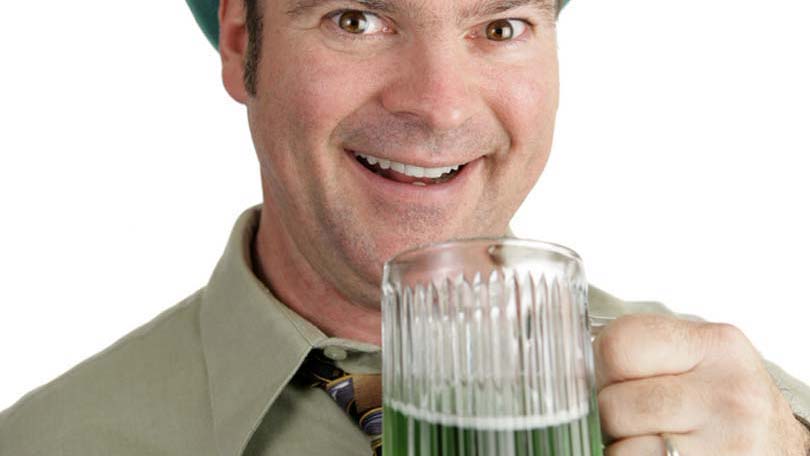
For those who have never realized the meaning of St. Patrick’s Day, it is simply a day set aside in the middle of March that it’s perfectly acceptable to drink too much and be boisterously joyous. St. Patrick’s Day is a mildly celebrated in America, some celebrate it ferociously while others pretty much ignore the holiday.
St. Patrick is of course considered the patron saint of Ireland. His life is celebrated on the day he dies, March 17th, 461 AD. He was responsible for the conversion of a remarkable number of Irishmen to Christianity.
St. Patrick began his life in Wales, not Ireland. He was the son of a wealthy merchant until the age of sixteen, when his family was attacked and St. Patrick was sold mercilessly into slavery. He was known then as Maewyn, and he was forced into the isolation of sheep herding for a long six years, a drastic change from his original life. The solitude and the loneliness was what many believe drove him to his devout Christian principles and in fact gave him the strength to escape.
On foot he traveled two hundred dangerous miles to the coast of Ireland, and then sailed onto freedom where he founded his studies in Christianity and devoted himself to missionary work. Because of his familiarity with the Irish people, the landscape, and the language, he was sent back to Ireland once more to begin his work as a missionary. The druid priests met him with great resistance as they fought to maintain the Pagan ways.
Maewyn became readily known as Patrick and set about bonding with the people of Ireland in an effort to explain Christianity. He used clovers to illustrate the holy trinity and created the cross bearing the sun to provide continuity to what the Irish already knew and held dear to their hearts. He respected their holy tributes that honored the gods with bonfires, and Easter was celebrated with huge bonfires. Eventually he began to convert the Irish in drives to Christianity.
There are those that credit St. Patrick with the unusual absence of snakes, stating that he drive the snakes from Ireland, but science is more readily able to determine that the snakes dislike the combination of climate, weather patterns, and basic terrain and they found Ireland less habitable than other regions.
The feast of St. Patrick’s Day historically excuses the fasting requirements associated with lent, and has historically led to large celebrations. In the 1760’s Irish immigrants in New York began the tradition of the St. Patrick’s Day parade, despite the frowns they received from other religious leaders and groups. Once the great famine of Ireland struck, the massive immigration to the United States created a high enough volume of Irish immigrants that the parades and celebrations became U.S. traditions.
St. Patrick’s Day celebrations have taken on tremendous popularity in town with high Irish ratios, although the celebrations are certainly far from restricted to solely the Irish. Anyone can join in the festivities and create a day that is filled with joy and heavy celebration. Although the tradition of heavy drinking began as a United States tradition (pubs in Ireland were actually closed for the day and the Irish people congregated in Mass instead) the tradition of celebrating with large amounts of alcohol has actually spread to a worldwide phenomenon with the exception of countries that do not acknowledge Christian holidays.
The traditional wearing and displaying of the color green pays homage to Ireland and all her splendor. New York and Chicago both revamp at least one special part of the city every year to represent green in public areas, denoting respect for the Emerald Island.
The eastern seaboard tends to have grander St. Patrick’s Day celebrations than elsewhere in the country, due to the higher Irish population, and those wishing to experience an Irish festival that most closely resembles a true Irish celebration should head to a northeastern city. Boston and New York are the most highly publicized St. Patrick’s Day events.
As American we have misconstrued a few holiday facts, such as considering leprechauns cute little spirits. They are actually considered evil spirits that can rob you blind both of monetary and moral value. The shamrock is neither a real plant nor is it the national symbol of Ireland. The shamrock is actually a type of clover that grows readily in Ireland and the national symbol is a Celtic harp.
Either way, St. Patrick’s Day is a day that the Irish and other interested parties have learned to celebrate in peace with each other and in harmonious feasting. Sometimes the coming together in a holiday spirit can bridge many gaps between cultures.
